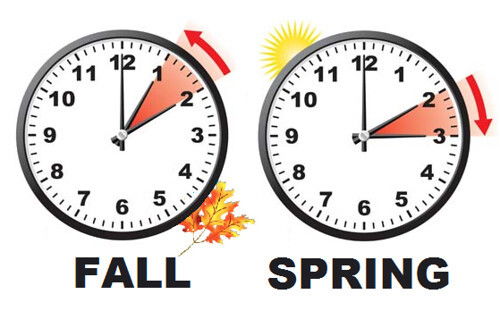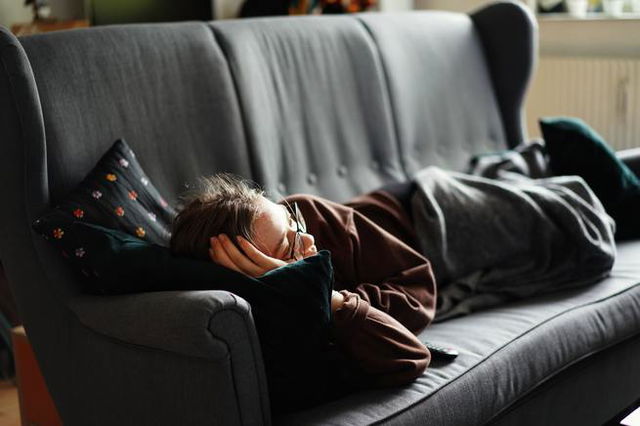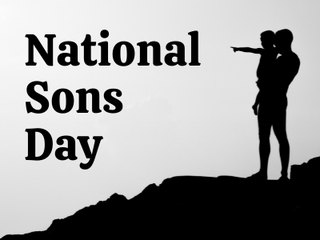In 2025, Daylight Saving Time begins on Sunday, March 9, at 2 A.M., and ends on Sunday, November 2, at 2 A.M.
Daylight Saving Time in the United States always starts on the second Sunday of March and ends on the first Sunday of November.
Fall Back, Spring Forward
The mnemonic used to remember how Daylight Saving Time works is “Spring forward, Fall back”. This means that in the Spring the clocks go forward one hour—from 2 a.m. to 3 a.m. — and in the Fall, they are set back one hour again—at 2 a.m. they go back to 1 a.m.

In the United States, most regions observe Daylight Saving Time, apart from the states of Arizona and Hawaii, and the territories of Puerto Rico, Guam, American Samoa, and the U.S. Virgin Islands.
Even though the different U.S. states observe distinct time zones in their region, Daylight Saving Time happens at 2 a.m. for everyone, regardless of what time zone they're in. This means that in some states, Daylight Saving Time starts earlier than in others.
Daylight Saving Time Starts
These are the dates for the beginning of Daylight Saving Time, when the clocks go forward, in the United States in the next few years:
| Year | DST Starts |
|---|---|
| 2026 | March 8 |
| 2027 | March 14 |
| 2028 | March 12 |
| 2029 | March 11 |
| 2030 | March 10 |
Learn more about when Daylight Saving Time starts.
Daylight Saving Time Ends
On the last Sunday in November, the clocks move back again one hour, ending the Daylight Saving Time and going back to Standard Time. Here are the dates for the end of DST in the following years:
| Year | DST Ends |
|---|---|
| 2026 | November 1 |
| 2027 | November 7 |
| 2028 | November 5 |
| 2029 | November 4 |
| 2030 | November 3 |
Here is more information about when Daylight Saving Time ends.
Why do we have Daylight Saving Time?
An Unpopular Choice
The United States first adopted Daylight Saving Time in 1918 when the House of Representatives voted in favor of a standard time Act, “An Act to preserve daylight and provide standard time for the United States.”
The act was approved on March 19 that year and so, 12 days later on March 31, the clocks of The US Capitol Building were moved forward for Daylight Saving Hours for the first time. The reason for the change was to capitalize on the hours of sunlight in the hope that it would reduce fuel costs.
Section 3 of the Act read as follows:
That at two o’clock antemeridian of the last Sunday in March of each year the standard time of each zone shall be advanced one hour, and at two o’clock antemeridian of the last Sunday in October in each year the standard time of each zone shall, by the retarding of one hour, be returned to the mean astronomical time of the degree of longitude governing said zone, so that between the last Sunday in March at two o’clock antemeridian and the last Sunday in October at two o’clock antemeridian in each year, the standard time in each zone shall be one hour in advance of the mean astronomical time of the degree of longitude governing each zone, respectively.
The changes were very unpopular, especially among those from mining and farming communities, as well as Christian communities who felt the changes were meddling with 'God's Time'. The range of opposition was the reason that Daylight Saving Time did not initially last long, and after the end of the War, only a year later, the law was repealed.
“War Time” — Roosevelt's Choice
During the Second World War, America Congress made the same decision to alter the time as they had in the first world war with “An Act to promote the national security and defense by establishing daylight saving time.”
This resulted in Daylight Saving Time being reinstituted on February 9, 1942, but rather than being seasonal, it was brought in for the full year. The Act decreed that it should “cease to be in effect six months after the termination of the present war or at such earlier date as the Congress shall be concurrent resolution designate.”
Daylight Saving Time (DST) was given the name “War Time” by President Roosevelt. It lasted until the end of the War in 1945.
The Uniform Time Act
The Uniform Time Act of 1966 played a significant role in producing a coherent system of timekeeping at a federal level. As late as the 1960s there was still a large variation in timekeeping within states, mostly based on the rising of the Sun. Not only did The Uniform Time Act mandate a standard time to be observed in the United States, but it also reintroduced Daylight Saving Time. States could be exempt from Daylight Saving Time, but only if the entire state chose to do so.
Modern Changes
In recent years there have been changes to Daylight Saving Time, for example in The Energy Policy Act of 2005 an amendment was made to The Uniform Time Act to extend the length of time of Daylight Saving Hours. This came into force in 2007 when it was extended to begin on the Second Sunday of March and end on the first Sunday in November.
This is how and why Daylight Saving Time has remained the same ever since.
At the State level (All Exceptions)
Whilst most states currently use Daylight Saving Time, there have been exceptions due to the way that each state has had the autonomy to decide how they keep time. For example:
- The state of Arizona does not change its clocks and maintains Mountain Standard Time all year round. Opting out of The Uniform Time Act of 1966
- Hawaii is another state that does not participate in Daylight Saving Time, also opting out of The Uniform Time Act of 1966.
- In Indiana, Between 1972 and 2005, some counties followed Daylight Saving Time, and some did not. Gary and Evansville on the west of the state are in Central Time Zone and used Daylight Saving Summer, but the rest of the state is in Eastern Standard Time Zone and did not follow Daylight Saving changes. This unusual situation ended in 2005 when a State law successfully synchronized the clocks.
- In Canada, Yukon Territory and Saskatchewan observe a fixed time all year. Yukon remains in Mountain Standard Time and does not change to Daylight Saving, and Saskatchewan remains permanently in Central Standard Time.
The Effects of Daylight Saving Time

Some studies suggest that the change in hours that occurs with Daylight Saving Time, has several negative effects on people's health and brains. On the day after the Daylight Saving Time change takes place, hospitals tend to receive more heart attack patients than usual and there seem to be more vehicle accidents on the roads.
This is because the change from standard time to Daylight Saving Time severely impacts our quality of sleep. Even though we only lose one hour of sleep during this transition, that is enough to impact the circadian rhythm that regulates our sleep. After the change, our brains also have trouble adjusting to the new cycles of light and darkness.
Sleep is essential to maintain good health, so if we're not getting enough of it impacts our whole life. Some people may be so affected by this change that they suffer from insomnia, and many others who struggle to adapt to the new times can feel tired and irritable.
Luckily, Dr. William Anthony from Boston University realized this in 1999 and founded National Napping Day. This day takes place on the Monday after Daylight Saving Time starts, and gives people the opportunity to nap and make up for the lost hour of sleep.











